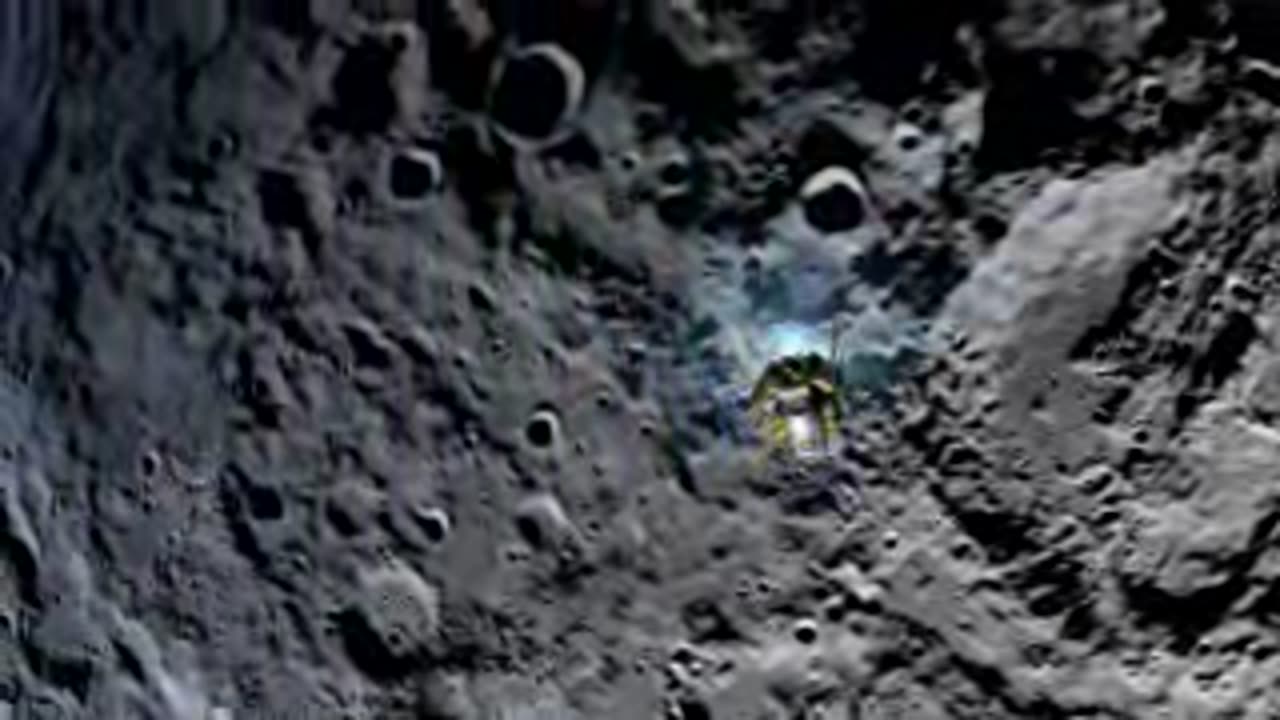Premium Only Content

The lunar surface, also known as the surface of the Moon, is a barren and desolate landscape characterized by a unique blend of rugged terrains, impact craters, and fine regolith. The Moon lacks a substantial atmosphere, which means there is no protection from the harsh radiation and extreme temperature fluctuations. As a result, the lunar surface experiences scorching hot temperatures during the day and freezing cold temperatures during the night.
One of the most striking features of the lunar landscape is its vast array of impact craters, caused by the constant bombardment of space debris and meteoroids over billions of years. These craters come in various sizes, from small pockmarks to enormous basins like the Aitken Basin and the Imbrium Basin. Some of these craters have central peaks or raised rims due to the immense energy released during the impact.
The lunar surface is covered in a layer of fine dust and soil called regolith. This layer is the result of countless impacts breaking down rocks into smaller particles over time. It's a mixture of fine dust, rocky fragments, and small glass beads formed from melted rock during impacts. The regolith is also responsible for the Moon's characteristic gray color, as it reflects sunlight differently compared to Earth's soil.
-
 2:13:31
2:13:31
The Connect: With Johnny Mitchell
1 day ago $6.98 earnedIs Garth Brooks A Serial Killer? Exposing The Dark Secrets Of Country Music's Biggest Star
18.6K7 -
 9:52
9:52
MattMorseTV
11 hours ago $9.35 earnedTrump just GAVE the ORDER.
7.74K41 -
 19:19
19:19
GritsGG
12 hours agoINSANE Trio Match! Most Winning Warzone Player IGLs to Victory!
837 -
 32:24
32:24
Forrest Galante
1 day agoHunting and Eating The World's WORST Fish (Everglades At Night)
121K8 -
 11:37
11:37
The Pascal Show
1 day ago $12.18 earnedTHEY WANT TO END HER?! Candace Owens Claims French President & First Lady Put A H*t Out On Her?!
39.2K44 -
 LIVE
LIVE
Lofi Girl
3 years agolofi hip hop radio 📚 - beats to relax/study to
172 watching -
 35:40
35:40
The Why Files
5 days agoPsyops: From Dead Babies to UFOs - The Same Pattern Every Time
104K102 -
 1:48:26
1:48:26
Tucker Carlson
2 days agoKristen Breitweiser: 9-11 Cover-Ups, Building 7, and the Billion-Dollar Scam to Steal From Victims
177K403 -
 5:48
5:48
Russell Brand
2 days agoThey BURNED me in effigy!
65.2K40 -
 1:21:40
1:21:40
Man in America
8 hours agoThe Secret AI Plan to Enslave Humanity — And Why It Will FAIL w/ Todd Callender
49.6K21